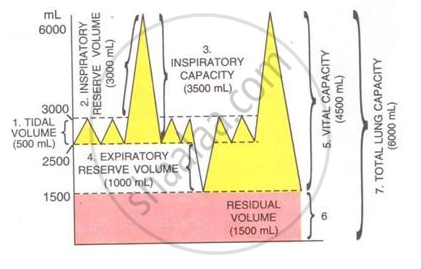Advertisements
Advertisements
प्रश्न
Complete the following statement by choosing the correct alternative from those given below.
The protective covering of the lung ______.
पर्याय
pericardium
pleura
renal fat
उत्तर
The protective covering of the lung pleura
APPEARS IN
संबंधित प्रश्न
With the help of a suitable diagram, describe the conducting system of the human heart.
The ultimate end parts of the respiratory system in humans are known as
Give suitable explanation for the following :
Why does gaseous exchange continue in the lungs even during expiration?
The volume of air in the lungs and the rate at which it is exchanged during inspiration and expiration was measured.
The following diagram shows a group of the lung volumes and capacities.

Study the diagram carefully and explain briefly the following :
Residual volume (RV)
The front opening of the wind pipe is guarded by ______.
Fill in the blank.
In human beings, the exchange of gases takes place in _____.
Fill in the blanks.
Sweat serves to excrete excess _________ and ________.
Write true or false for the following statement. Rewrite the false statement correctly.
Breathing is a chemical process.
Differentiate between
bronchi and alveoli.
What are turbinates?
Define the following:
Dyspnea
Name the following:
Sound producing organ.
Note the relationship between the first two words and suggest a suitable word for the fourth place.
Lungs __ Respiration, Alveoli __ ______.
The question has four options. Choose the correct answer:
Larynx acids as
Discuss the function of the diaphragm in breathing.
Define the term "Trachea".
Into which of the following does the terminal bronchiole end?
Which of the following are the parts of upper respiratory system?
- Larynx
- Bronchi
- Trachea
- Nasopharynx
- Nasal cavities
Carefully study the diagram of the human respiratory system with labels A, B, C and D. Select the option which gives correct identification and main function and /or characteristic.

For completion of respiration process, write the given steps in sequential manner
- Diffusion of gases (O2 and CO2) across alveolar membrane.
- Transport of gases by blood.
- Utilisation of O2 by the cells for catabolic reactions and resultant release of CO2.
- Pulmonary ventilation by which atmospheric air is drawn in and CO2 rich alveolar air is released out.
- Diffusion of O2 and CO2 between blood and tissues.
